The Cathedral of Santiago de Compostela – 6 Things To Know
The Cathedral of Santiago de Compostela is an iconic symbol of the city of Santiago and the final point for many pilgrims walking or cycling the Camino de Santiago.
Over the centuries, thousands of pilgrims worldwide have travelled to the Cathedral of Santiago de Compostela in Galicia, North West of Spain. The pilgrims’ routes are the Camino de Santiago and the Way of St James.

The Cathedral of Santiago de Compostela: The Camino Destination
The Camino consists of a network of trails spread across Europe, all sharing one goal and one destination: the cathedral of Santiago de Compostela.
Let’s look at 6 things to know about the Cathedral of Santiago de Compostela:
1. Tomb of the Apostle St. James
The Tomb of the Apostle St James is located in the cathedral, in a crypt beneath the Main Altar. Pilgrims can visit this sacred site, where the remains of St James, along with those of his disciples, Saint Athanasius and Saint Theodore, are kept in a silver urn. These relics have made Santiago one of the world’s most significant pilgrimage destinations.

2. Design & Redesign: A Romanesque Masterpiece
The cathedral of Santiago de Compostela is a leading pilgrimage destination and architectural marvel. It showcases splendid religious art and architecture, drawing visitors worldwide. While preserving its medieval structure and Romanesque essence, it has Gothic enhancements. Baroque features have also been added, creating the masterpiece admired today.
In the 9th century, a shepherd discovered the remains of St James and built a small chapel, with varying accounts placing this event between 813 and 830. However, the chapel quickly became too small for the growing number of worshippers. A second, larger church was constructed but was eventually destroyed.
Bishop San Pedro de Mezonzo rebuilt the church in 1003 in pre-Romanesque style, and by 1075, the current cathedral was under construction during the peak of pilgrimages.
In the 12th century, Mestre Mateo created the Pórtico da Gloria, a Romanesque sculpture masterpiece featuring 200 biblical figures, which adorns the western facade of the cathedral.
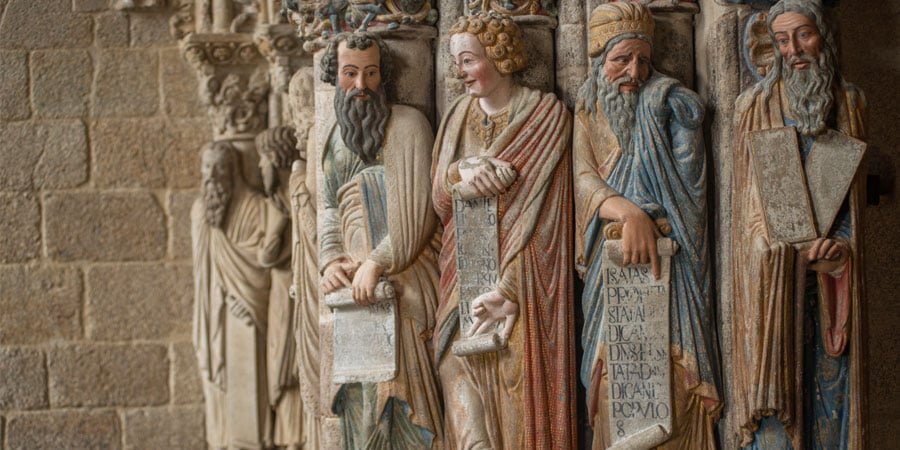
The Pórtico da Gloria was reopened to the public in 2018 after undergoing a meticulous 10-year restoration project.
At one time, the Cathedral of Santiago de Compostela, standing at 76 metres, was the tallest building in Europe.
Gothic and Renaissance elements were added over time, including new chapels and the 14th-century Clock Tower. The Holy Door and a reimagined cloister were also introduced gradually.
However, the most significant transformation occurred during the Baroque period in the 17th and 18th centuries.
The iconic facade we admire today from Praza do Obradoiro is the result of extensive work. It has been restored to its former glory after years of cleaning and restoration.
3. Porta Santa: The Holy Door
The Porta Santa, also known as the Holy Door or Forgiveness Door (Puerta del Perdon), was constructed in the 16th century. Situated in Praza Quintana, it provides direct access for pilgrims to St James’ crypt, the Main Altar of the Cathedral, and the image of St James, which pilgrims traditionally embrace. The Holy Door is opened only during Holy Years, or Ano Xacobeo.
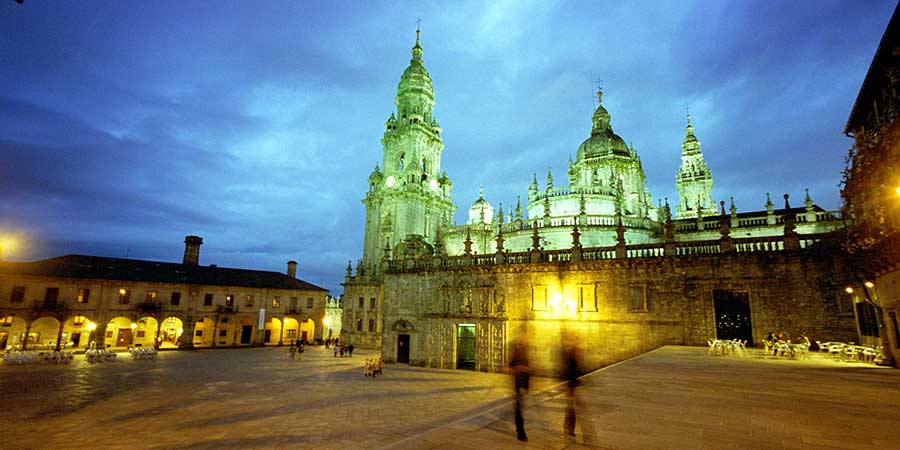
4. Botafumeiro
The Cathedral of Santiago de Compostela houses the renowned Botafumeiro, a massive incense thurible from the mid-19th century. The Botafumeiro swings dramatically across the Main Altar on special dates and occasions and is typically used during pilgrim masses.

5. Confession and Mass
Confession is available throughout the day at the Cathedral of Santiago de Compostela. If no priests are present in the confessionals or if you need confession in your own language, please inquire in the sacristy.
For more details about the Pilgrim Mass and the history of the Cathedral of Santiago de Compostela, or for information on specific services, please visit www.catedraldesantiago.com.
For more information about the Camino de Santiago routes or to plan your trip, please don’t hesitate to contact us.
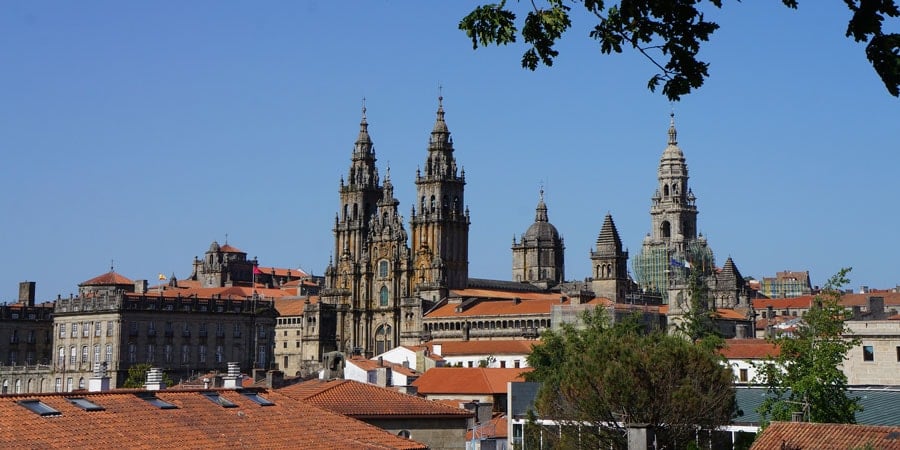

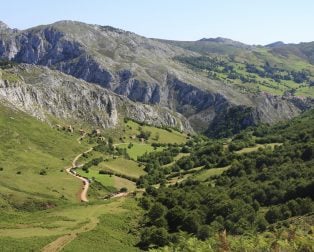
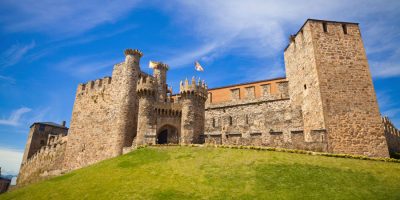

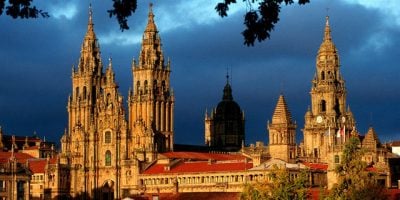

My upcoming visit will be my third to Santiago de Compostela. Looking forward to mass on All Saints Day.
Are civilians allowed to go inside the room behind metal bars where St James’ urn in a crypt was placed? I visited in October 1999 and I want to come back for another visit.
Thank you.
what a great website!!! this help me so much!!! thank u so much!
Hi Renaldo, thanks very much for your message, glad you are enjoying the website and that it’s helping you! 🙂
If a big group of pilgrims is trying to visit the tomb, do we need to make a reservation?
Hi Ana, it depends how big your group is but I would say no unless you are hoping for a guided tour of the Cathedral, I would contact them directly if that’s what you are looking for. The Cathedral is open and busy/welcoming to visitors so they are used to a lot of people.
I really wanted to thank you for these marvelous educational tips you are showing at this website. My extensive internet investigation has at the end of the day been recognized with awesome facts to talk about with my friends. I feel privileged to have come across the website and look forward to have more excellent reading time here. Thanks a lot once again for all the details.